
How to Use KY-023 Dual Axis Joystick Module: Examples, Pinouts, and Specs
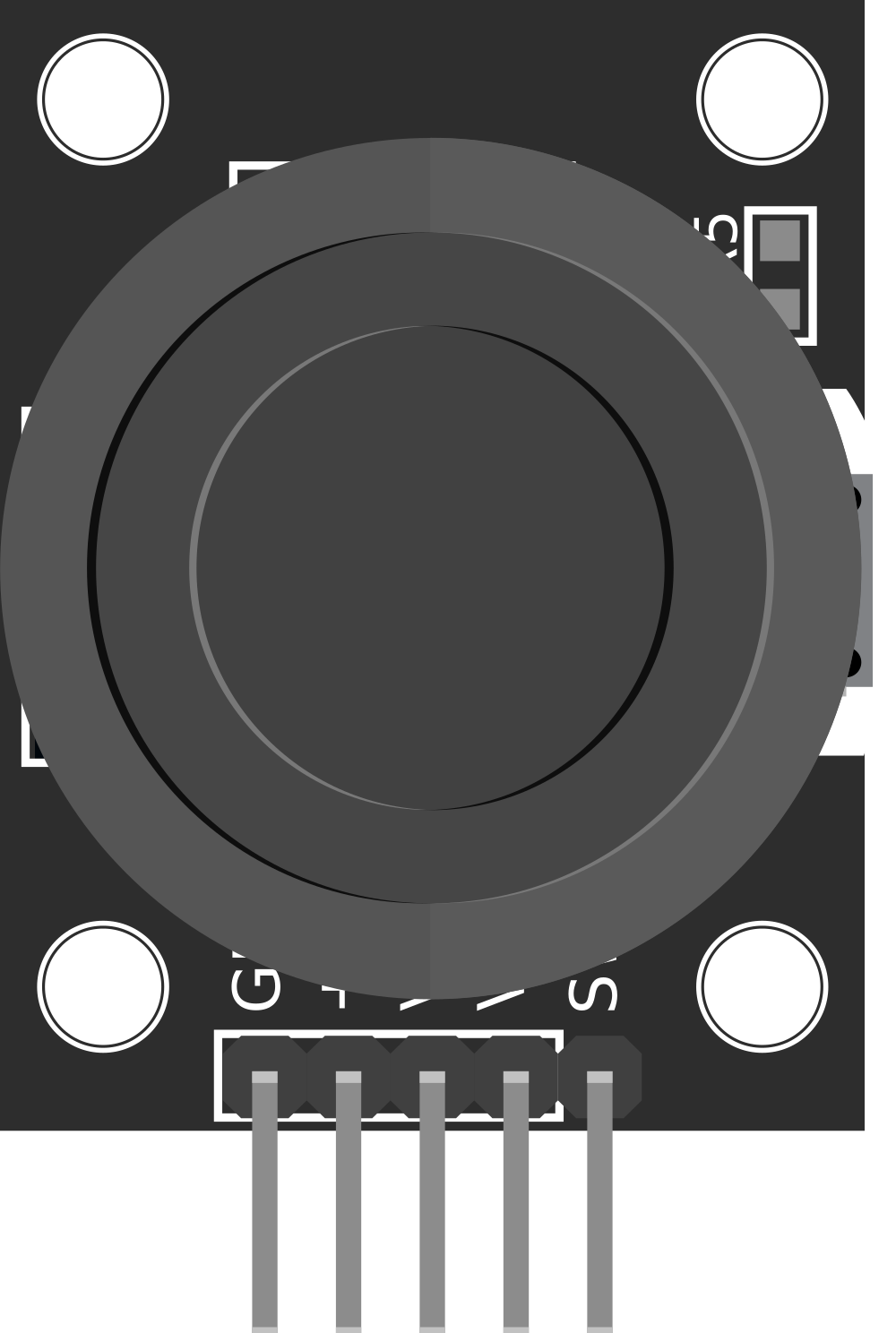
 Design with KY-023 Dual Axis Joystick Module in Cirkit Designer
Design with KY-023 Dual Axis Joystick Module in Cirkit DesignerIntroduction
The KY-023 Dual Axis Joystick Module is an input device that translates the user's physical movement into electronic signals. It is commonly used in electronic projects for controlling motors, servos, and other devices, providing an intuitive interface for two-dimensional control. The joystick module includes two potentiometers for the X and Y axes, which output analog signals corresponding to the position of the stick.
Explore Projects Built with KY-023 Dual Axis Joystick Module
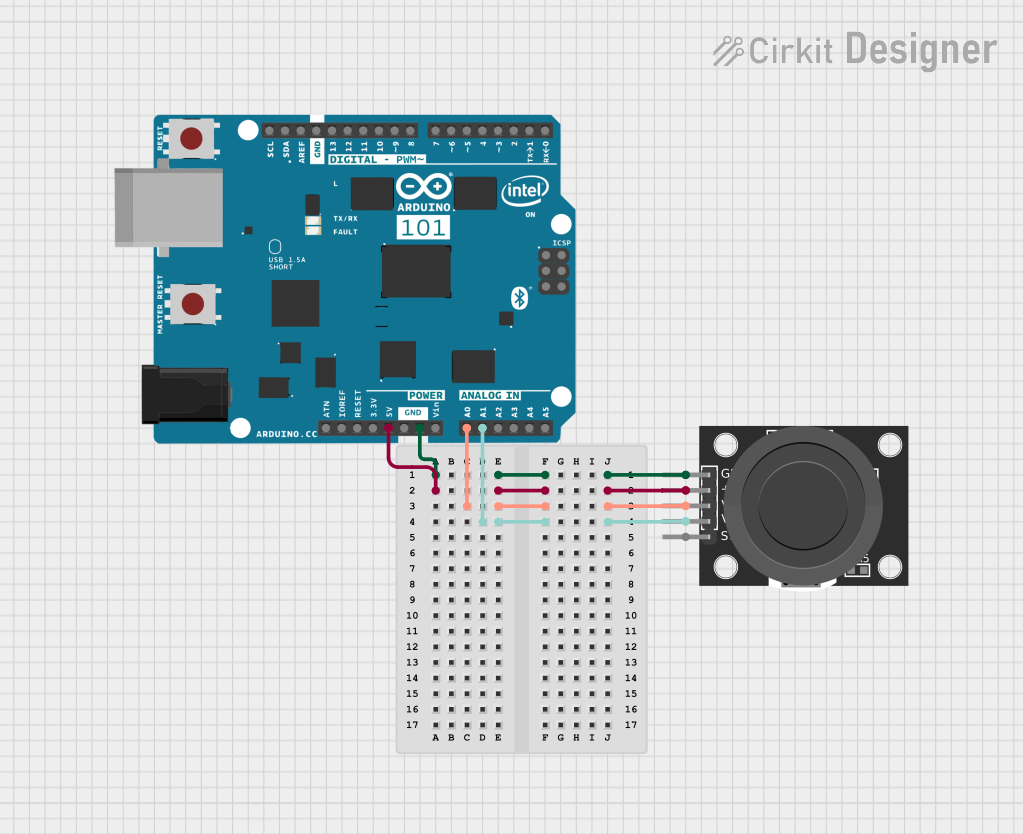
 Open Project in Cirkit Designer
Open Project in Cirkit Designer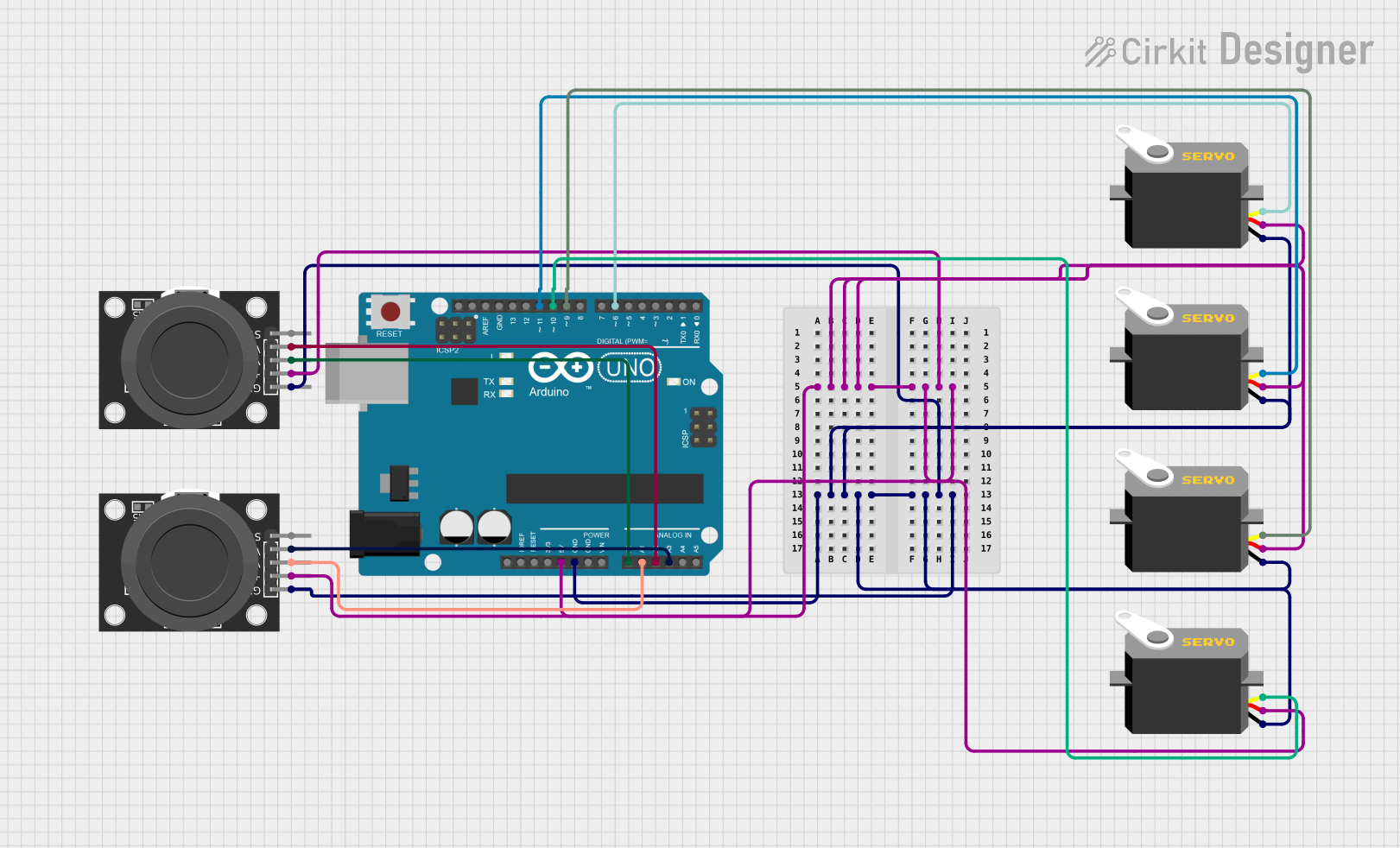
 Open Project in Cirkit Designer
Open Project in Cirkit Designer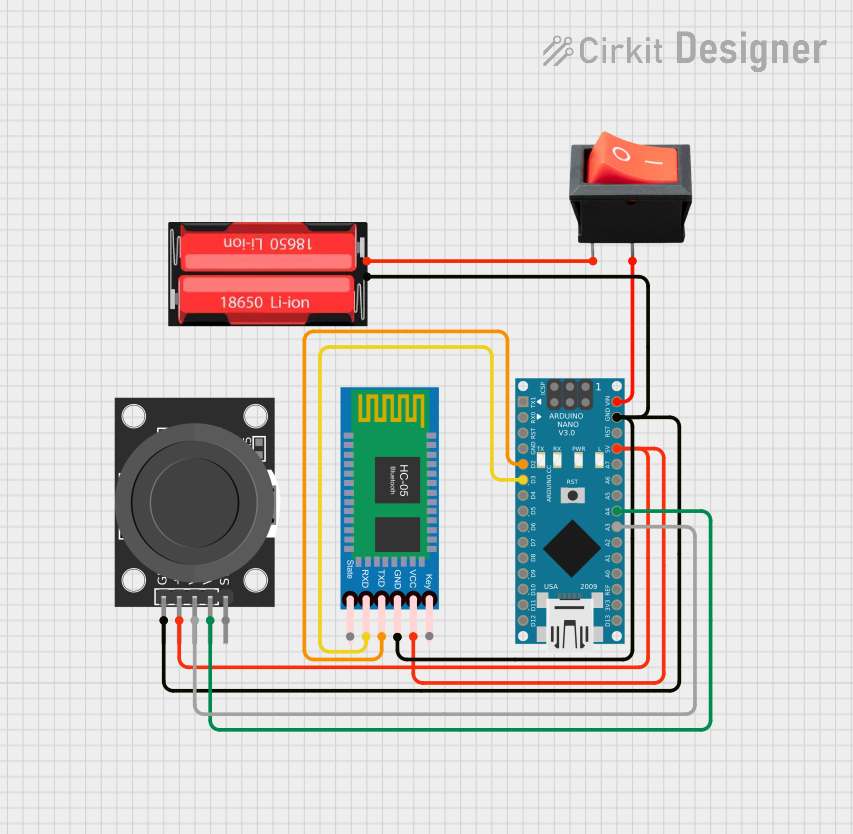
 Open Project in Cirkit Designer
Open Project in Cirkit Designer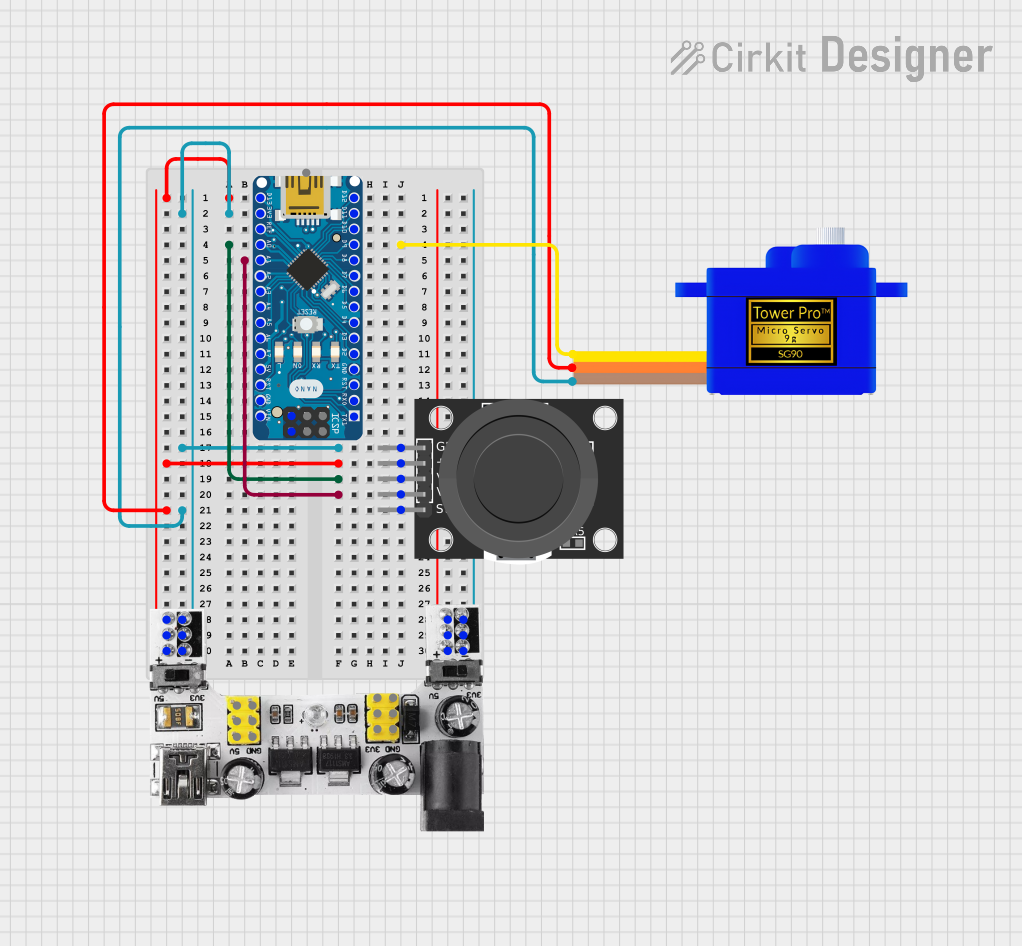
 Open Project in Cirkit Designer
Open Project in Cirkit DesignerExplore Projects Built with KY-023 Dual Axis Joystick Module

 Open Project in Cirkit Designer
Open Project in Cirkit Designer
 Open Project in Cirkit Designer
Open Project in Cirkit Designer
 Open Project in Cirkit Designer
Open Project in Cirkit Designer
 Open Project in Cirkit Designer
Open Project in Cirkit DesignerCommon Applications and Use Cases
- Robotics control interfaces
- Video game controllers
- Cursor movement on displays
- Remote control vehicles
- Educational projects and prototypes
Technical Specifications
Key Technical Details
- Operating Voltage: 3.3V to 5V
- Output Signal: Analog (two axes)
- Built-in switch (activated by pressing down on the joystick)
Pin Configuration and Descriptions
| Pin | Description |
|---|---|
| GND | Ground |
| +5V | Power supply (3.3-5V) |
| VRx | X-axis analog output |
| VRy | Y-axis analog output |
| SW | Switch button output |
Usage Instructions
How to Use the Component in a Circuit
- Connect the
+5Vpin to the 5V output on your microcontroller (e.g., Arduino UNO). - Connect the
GNDpin to a ground pin on your microcontroller. - Connect the
VRxpin to an analog input pin on your microcontroller to read the X-axis position. - Connect the
VRypin to another analog input pin to read the Y-axis position. - Optionally, connect the
SWpin to a digital input pin if you wish to use the built-in switch.
Important Considerations and Best Practices
- Ensure that the power supply voltage does not exceed the module's maximum rating.
- Use pull-up resistors if necessary for the switch to ensure a stable digital input.
- Calibrate the joystick's center position in your software to account for any offset in the resting position of the potentiometers.
Example Code for Arduino UNO
// KY-023 Dual Axis Joystick Module example for Arduino UNO
const int xAxisPin = A0; // Analog input pin for X-axis
const int yAxisPin = A1; // Analog input pin for Y-axis
const int buttonPin = 2; // Digital input pin for the button
void setup() {
pinMode(buttonPin, INPUT_PULLUP); // Initialize button pin as input with pull-up
Serial.begin(9600); // Start serial communication at 9600 baud
}
void loop() {
int xPosition = analogRead(xAxisPin); // Read the X-axis position
int yPosition = analogRead(yAxisPin); // Read the Y-axis position
int buttonState = digitalRead(buttonPin); // Read the button state
// Print the X and Y positions and button state to the serial monitor
Serial.print("X: ");
Serial.print(xPosition);
Serial.print(" | Y: ");
Serial.print(yPosition);
Serial.print(" | Button: ");
Serial.println(buttonState);
delay(100); // Delay for a short period to reduce serial output rate
}
Troubleshooting and FAQs
Common Issues Users Might Face
- Inaccurate Readings: If the joystick is not returning accurate readings, ensure that it is properly calibrated in your software.
- Unstable or Noisy Signals: Adding a small capacitor across the power and ground near the joystick module can help filter noise.
- Button Not Responding: Check the connection and ensure that the button pin is configured with the correct pull-up or pull-down setting.
Solutions and Tips for Troubleshooting
- Double-check all connections and ensure that they are secure.
- Verify that the power supply is within the specified range for the module.
- Use the
analogReference()function in Arduino if you are using a reference voltage other than the default 5V.
FAQs
Q: Can I use the KY-023 module with a 3.3V system? A: Yes, the module can operate at 3.3V, but the analog output range will be 0-3.3V instead of 0-5V.
Q: How can I increase the precision of the joystick readings? A: You can increase the precision by using the full range of the analog input and ensuring that the joystick is properly calibrated.
Q: Is it possible to use the joystick without the switch feature?
A: Yes, the switch is optional. If you do not need the switch functionality, you can leave the SW pin disconnected.